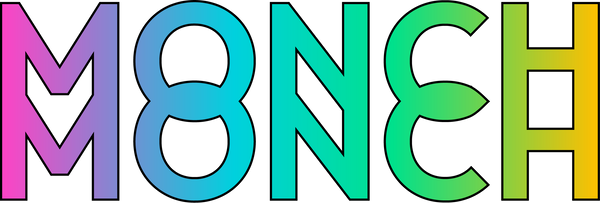
Semaglutide Diet Plan
Share
Understanding the role of diet in enhancing the effectiveness of semaglutide is crucial for individuals who are using this medication to manage their health. Semaglutide, often prescribed for weight management and diabetes control, works by mimicking the hormone GLP-1, which regulates appetite and insulin levels.
However, its success can be significantly boosted by following a structured diet plan. In this article, we will discuss a comprehensive semaglutide diet plan, including meal ideas, a grocery list, and foods to eat while on semaglutide.
The Importance of a Semaglutide Diet Plan
The semaglutide diet plan is designed to support the medication's effects, helping you achieve your health goals more effectively. By focusing on nutritious foods that complement the medication's action, you can enhance your body's response and improve your overall well-being.
A well-balanced diet can also mitigate potential side effects of semaglutide, such as gastrointestinal discomfort, by ensuring a steady intake of fiber and nutrients that aid digestion.
Moreover, adopting a structured diet plan encourages the development of healthier eating habits. It provides a framework that helps you make informed food choices, reducing the temptation to indulge in unhealthy snacks or meals. This dietary discipline can lead to more consistent weight management, which is a critical aspect of the treatment with semaglutide.
Additionally, understanding the importance of a supportive diet cultivates a holistic approach to health, where medication and nutrition work hand-in-hand to achieve optimal results.
Key Principles of the Semaglutide Diet
- Nutrient-Rich Foods: Prioritize whole foods rich in vitamins, minerals, and fiber. These foods not only provide essential nutrients but also improve satiety, helping to control appetite and reduce the likelihood of overeating. Whole foods are less processed and thus retain their nutritional integrity, offering a natural balance of nutrients that are beneficial for overall health.
- Balanced Meals: Ensure a balance of protein, healthy fats, and complex carbohydrates. Each meal should be structured to maintain energy levels throughout the day, prevent spikes in blood sugar, and support metabolic health. Balanced meals are crucial in maintaining insulin sensitivity, which is particularly important for individuals managing diabetes or pre-diabetic conditions.
- Portion Control: Manage portion sizes to avoid overeating and maintain steady weight loss. Understanding appropriate portion sizes helps to keep caloric intake in check, which is vital for effective weight management. Smaller, more frequent meals can also aid in controlling hunger and sustaining energy levels, making it easier to adhere to dietary changes over time.
- Hydration: Drink plenty of water to support your metabolism and digestive health. Staying hydrated is essential for optimal physiological function and can aid in appetite control. Proper hydration also assists in the efficient breakdown and absorption of nutrients, ensuring that the body receives the full benefits of the diet plan.
List of Foods to Eat While on Semaglutide
What to Eat While Taking Semaglutide
To maximize the benefits of semaglutide, focus on these food groups:
- Lean Proteins: Seitan, tofu, and legumes provide essential amino acids. These proteins are vital for muscle maintenance and repair, especially important if you are incorporating exercise into your routine. Opting for lean sources helps minimize saturated fat intake, promoting cardiovascular health.
- Whole Grains: Brown rice, quinoa, oats, and whole wheat pasta support sustained energy. Whole grains are rich in fiber, which aids digestion and helps maintain stable blood sugar levels. They provide a slow release of energy, preventing the energy crashes that can lead to unhealthy snacking.
- Fruits and Vegetables: Berries, leafy greens, broccoli, and sweet potatoes offer vital nutrients. These foods are high in antioxidants, which combat oxidative stress and support immune health. Including a variety of colors in your diet ensures a wide range of nutrients, each contributing to different aspects of health.
- Healthy Fats: Avocados, nuts, seeds, and olive oil promote heart health. Healthy fats are important for brain health and hormone production, and they help keep you feeling full longer. Incorporating these fats into your diet can enhance the flavor of meals, making them more satisfying.
Foods to Avoid Whole on Semaglutide
Certain foods can interfere with the effectiveness of semaglutide. Consider limiting:
- Processed Foods: High in unhealthy fats, sugars, and sodium, processed foods can derail your dietary efforts. They often contain additives that can exacerbate cravings and lead to overeating, counteracting the appetite-regulating effects of semaglutide.
- Sugary Snacks and Beverages: Can lead to blood sugar spikes. Excessive sugar intake can cause rapid fluctuations in energy levels and increase the risk of insulin resistance, making it harder to manage weight and blood glucose levels effectively.
- Refined Carbs: White bread, pastries, and sugary cereals lack nutritional value. These foods are quickly digested, leading to spikes in blood sugar and subsequent crashes, which can increase hunger and cravings. Opting for whole grain alternatives provides more nutrition and supports stable energy levels throughout the day.
Monch Monch Fiber: Turn Junk Fook into Health Food
Want to take the guesswork out of what you should vs shouldn't eat? Monch Monch is here for you.
Monch Monch's sugar-absorbing fiber turns ultraprocessed, sugary foods back into whole, healthy foods. Monch Monch works in your stomach by absorbing sugar from your meal and trapping it, preventing your body from digesting the sugar.
Monch Monch then feeds your healthy gut microbiome, leading to the production of natural GLP-1. So it's a two-for-one gut health special!
Try Monch Monch today. Up to 30% off your first order:
Crafting Your Semaglutide Meal Plan
Creating a meal plan tailored to your needs can help ensure consistent adherence to the diet and medication regimen. Here is a sample meal plan to get you started:
Best Foods to Eat on Semaglutide for Breakfast
- Option 1: Oatmeal topped with fresh berries and a sprinkle of nuts. Oatmeal is an excellent source of soluble fiber, which can help lower cholesterol and promote heart health. The addition of berries and nuts adds antioxidants and healthy fats, making it a well-rounded meal.
- Option 2: Scrambled tofu with spinach and whole-grain toast. Tofu provides high-quality protein, while spinach offers iron and other important vitamins. Whole-grain toast complements the meal with complex carbohydrates, ensuring a balanced start to the day.
What to Eat When Taking Semaglutide: Lunch
- Option 1: Grilled tofu salad with mixed greens, cherry tomatoes, and avocado. This salad is rich in lean protein, healthy fats, and a variety of vitamins from the fresh vegetables. It's a light yet filling option that supports sustained energy levels throughout the afternoon.
- Option 2: Quinoa bowl with black beans, corn, and diced peppers. This meal is packed with plant-based protein and fiber, supporting digestive health and providing a nutrient-dense lunch option. The colorful vegetables not only enhance flavor but also add a range of vitamins and minerals.
Dinner
- Option 1: Baked salmon with steamed broccoli and sweet potato. Salmon is high in omega-3 fatty acids, which are beneficial for heart health, while broccoli and sweet potatoes provide fiber and essential vitamins. This meal is both satisfying and nutritious, perfect for an evening meal.
- Option 2: Stir-fried tofu with mixed vegetables and brown rice. Tofu offers a plant-based protein source, while the vegetables and brown rice supply fiber and complex carbohydrates. This meal is flavorful and filling, making it an excellent choice for dinner.
Snacks
- Fruit: An apple or a banana. These fruits are easy to carry and provide a quick, healthy energy boost. They are rich in vitamins and fiber, making them a smart choice for between-meal snacking.
- Nuts: A small handful of almonds or walnuts. Nuts are a great source of healthy fats and protein, helping to keep you satiated between meals. They are also convenient to carry and can be easily incorporated into any diet plan.
Building Your Semaglutide Grocery List
Creating a strategic grocery list can help streamline your shopping and ensure you have all the ingredients necessary for your meal plan. Here's a basic list to consider:
- Proteins: Seitan, legumes, tofu, black beans. These proteins can be used in a variety of dishes, offering versatility and nutritional balance to your meals.
- Grains: Oats, brown rice, quinoa, whole wheat bread. Stocking up on these grains ensures you have a reliable source of energy and fiber, supporting your dietary goals.
- Fruits: Berries, apples, bananas. Keeping a selection of fresh fruits on hand provides convenient and healthy snack options, as well as ingredients for meals.
- Vegetables: Spinach, broccoli, bell peppers, sweet potatoes. These vegetables are nutrient-dense and can be used in a wide array of recipes, enhancing the flavor and nutritional value of your meals.
- Healthy Fats: Avocados, almonds, olive oil. These fats are essential for a healthy diet and can be used in cooking or as toppings to enrich your meals.
- Miscellaneous: Low-fat yogurt, herbal teas. These items offer additional options for snacks and beverages, supporting a well-rounded and enjoyable diet plan.
Tips for Your Semaglutide Diet Plan Menu
- Plan Ahead: Spend time each week planning meals and prepping ingredients to save time during busy days. Having a clear plan helps reduce the stress of meal preparation and ensures you stay on track with your dietary goals.
- Mindful Eating: Pay attention to hunger cues and practice mindful eating to prevent overeating. Being present during meals allows you to enjoy your food more fully and recognize when you are satisfied, reducing the tendency to overeat.
- Stay Active: Incorporate regular physical activity to complement the dietary changes and enhance results. Exercise not only supports weight management but also improves mood and overall health, making it an essential component of a successful lifestyle change.
- Regular Check-Ins: Consult with your healthcare provider to track progress and make necessary adjustments to your plan. Regular monitoring ensures that your diet and medication regimen is effective and allows for timely interventions if needed.
Monch Monch: Empowering Your Health Journey
Taking semaglutide is a step towards better health, and by integrating a thoughtful diet plan, you can further empower your journey. Monch Monch can help.
Remember, consistency is key, and small, sustainable changes over time can lead to significant improvements in your health and well-being. Embracing this holistic approach not only enhances the effectiveness of your medication but also fosters a sense of control and empowerment over your health journey.
If you ever feel overwhelmed, reach out to healthcare professionals who can offer personalized guidance and support. Your path to a healthier lifestyle is a marathon, not a sprint, and every step you take is a victory worth celebrating. A supportive network, including dietitians and fitness experts, can provide valuable insights and motivation to help you stay committed to your goals.
By adhering to a semaglutide-friendly diet, you take an active role in managing your health, paving the way for a brighter, healthier future. This proactive approach encourages long-term lifestyle changes that not only support your current treatment but also promote lasting health improvements, ensuring a better quality of life.
